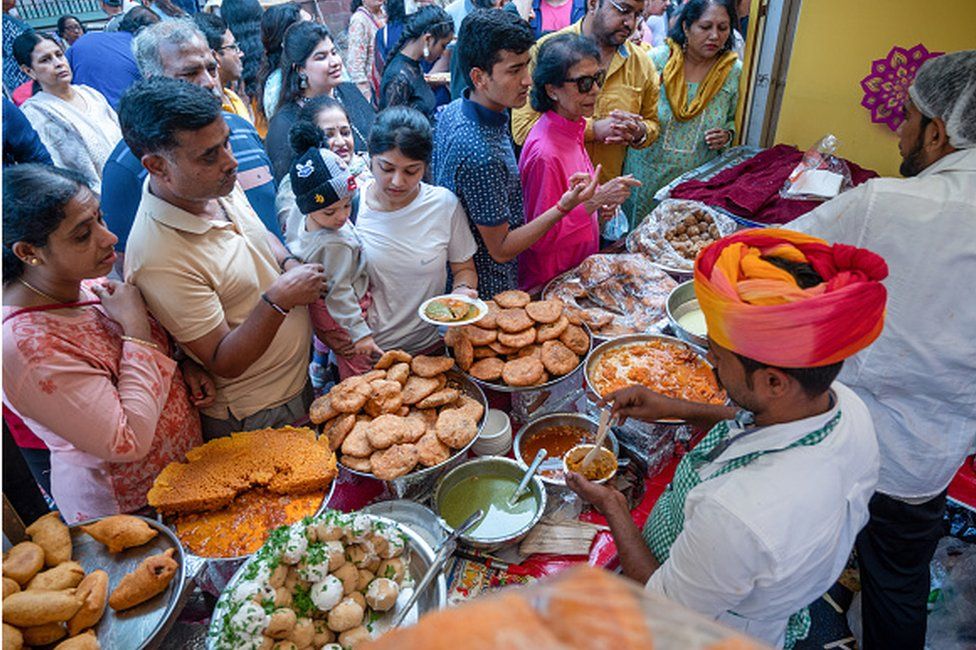-

-
-
Loading

Loading

In recent years, Indian street food vendors have been experimenting with unusual combinations of ingredients in order to create viral moments. This trend has been driven by vloggers and social media influencers who are constantly seeking new and exciting content. One example of this trend can be seen at the Odeon Shukla Paan Palace in Delhi, where customers line up to try fire paan. This unique version of paan, which is a betel nut leaf filled with slaked lime, rose petal jam, and mouth fresheners, is set on fire before being served to the customers. This dramatic presentation has attracted a lot of attention on social media and has become a popular attraction at the store. The trend of experimenting with street food is not entirely new in India. In the past, there have been innovative dishes like Jasuben Pizza in Gujarat, which added spicy sauce and grated raw cheese to their pizzas, and vendors in Kolkata who made deep-fried dishes using goat brains. However, these innovations were limited to certain regions of the country. The arrival of viral videos and social media trends has changed this, making experimental street food more common across India. Many vendors now create extreme combinations of ingredients in order to stand out and attract customers. These creations are often intended as stunts to gain viral popularity and can sometimes involve controversial ingredients or themes. However, not all street food creations are made for the sake of going viral. Some vendors create dishes based on popular buzzwords or themes. For example, Bipin Big Sandwich in Mumbai offers a sandwich called Baahubali, named after a popular Indian film. This sandwich is made with a variety of condiments and ingredients, which has propelled its price to four times more than other sandwiches. The owner credits his own creativity and effort for the sandwich's popularity, rather than viral trends. In some cases, vendors and content creators actively collaborate to create viral videos. Food vloggers are frequently approached by vendors to make extraordinary dishes for their cameras, and vendors also ask for concepts that can go viral. This kind of partnership between vendors and content creators is becoming more common in the street food business. While these viral food trends have brought attention and popularity to street food, they also have some negative consequences. For example, a food stall in Kolkata had to close down after a food blogger featured their rum-filled puchkas on social media, leading authorities to revoke their license. These incidents raise questions about the impact of viral food trends on the authenticity of street food. Despite these concerns, experts believe that viral food trends will have a limited impact on the rich diversity and heritage of Indian street food. Street food vendors have become like aspirational chefs, and their creativity and theatrics appeal to a certain group of customers. While there are no clear rules for street food in terms of PR and customer outreach, these trends are likely to continue shaping the food culture in India.